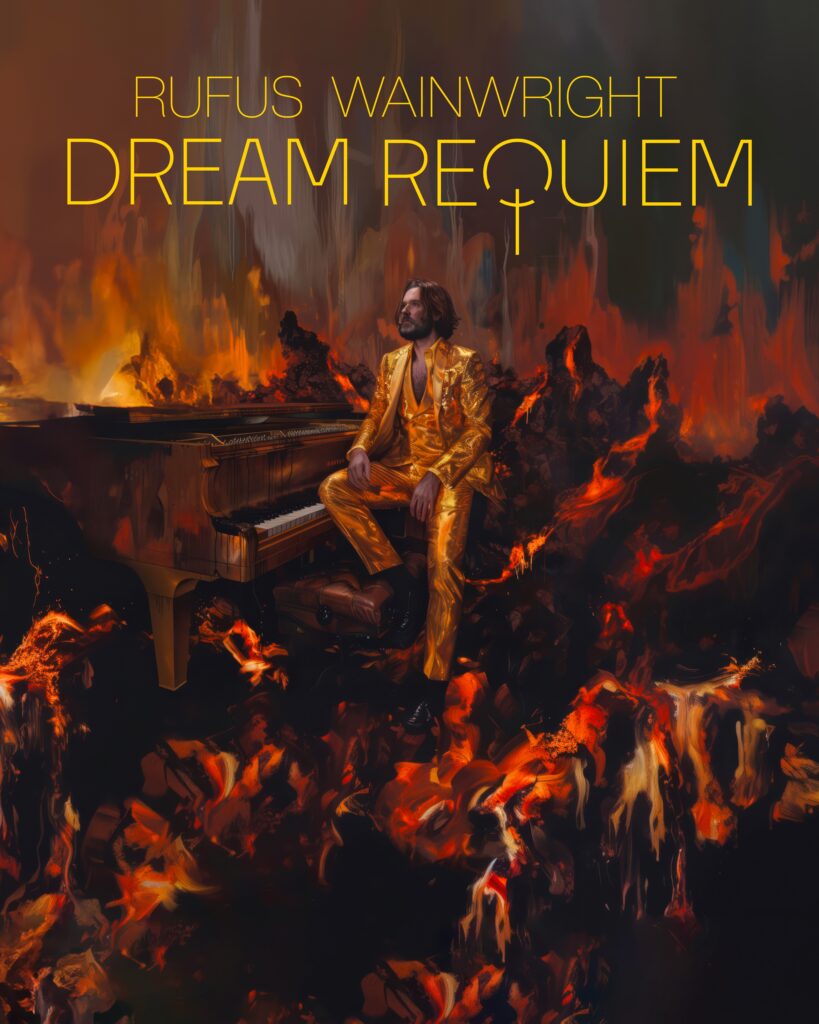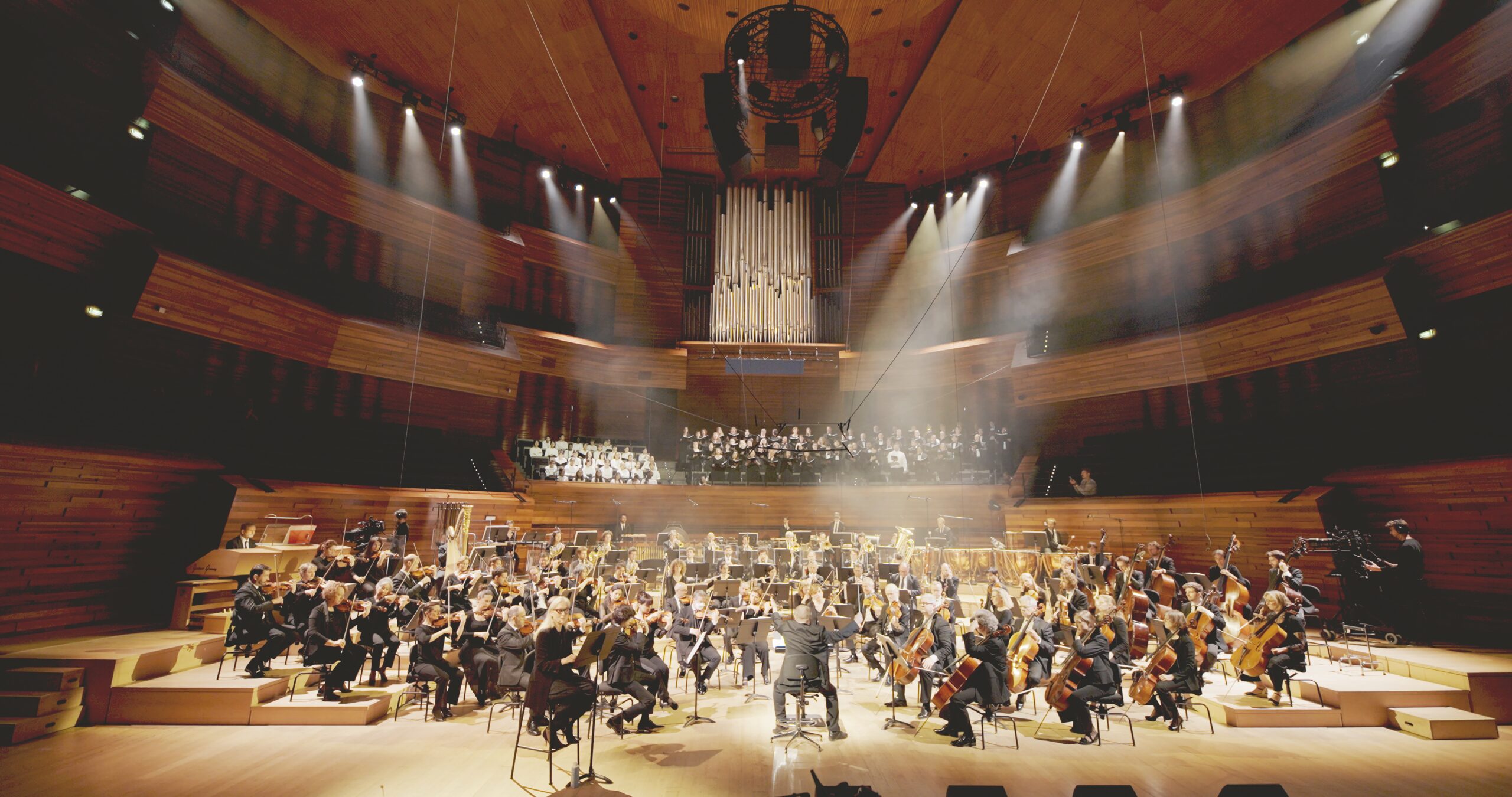
For more information and booking, please contact justjornagain@gmail.com

“Dream Requiem” is the amalgamation of two musical and creative ideas that have been developing side by side in Rufus Wainwright’s mind for a long time. They were brought together finally through the singularly dramatic experience of the Covid 19 pandemic shutting down the world in 2020 and the California wildfires of the same year that were the largest in recorded history.
Rufus’ fascination with the form of the Requiem has been going back to his early teenage days when his mother played him a recording of Giuseppe Verdi’s Requiem with Leontyne Price and Jussi Bjoerling under the baton of Fritz Reiner. He was transformed as a human being and artist and the experience showed him a clear and unique artistic path for his future in popular music and beyond. Growing up in a folk music household on both his mom’s and dad’s side, he subsequently used opera with its melodic, narrative and dramatic sensibility as his secret weapon in his pop music to create his own sound and later would write two operas, “Prima Donna” and “Hadrian”.
Already on “Want Two”, Rufus’ fourth studio album released in 2004 Rufus uses the “Agnus Dei” from the Latin Requiem Mass text as the lyrics for the first track on the album. The idea to write a Requiem clearly has been in the back of his mind for a long time but it needed the catalyst of these two crises happening side by side to break through. To really strengthen the link between the Dream Requiem and the Agnus Dei that Wainwright wrote 20 years ago, he uses the same melodic structure of the song and adapted it for choral voices and soprano solo only. It is the only section in the Requiem that has no orchestral accompaniment whatsoever.

Rufus has been drawn for a long to Byron’s poem “Darkness” which describes in vivid words the end of the world after the 1815 volcano eruption of Mount Tambora on the island of Sumbawa in Indonesia darkened the skies or weeks on end. It is to this day the most violent volcanic eruption in recorded history. The ash from the eruption column dispersed around the world, dimmed the sun and lowered the temperature worldwide. 1815 is also known as the “Year without a Summer”.
Byron’s poem is a powerful vision of environmental and political collapse that rings true to today only that today we are the drivers of the apocalypse and not natural disasters whose origins we were unaware of. Apocalyptic times were always the fuel for revolutions and great social shifts and change. “Darkness” seems to be almost the invisible foundation for the urge to change and overthrow a broken system. Byron’s poem starts with the line “I had a dream” and ends with “She is the Universe”. The dark side leads to the necessity of social change.
To write a Requiem during the time of Covid seemed like a very challenging but at the same time incredibly appropriate idea. A Requiem for the people we have lost in this crisis, for the past from which we were cut off and for the future which we did not yet know how to connect to, a Requiem for the human touch, togetherness and the human voice which all had become dangerous and contagious during the pandemic but then also a Requiem for the world we live in and the world we destroy at the same time. Originally Wainwright was looking for contemporary texts of victims of today’s crises’ but then was convinced that Byron’s powerful Bible infused 19th century language is more contemporary and universal.
Thinking about both the Byron poem and the Requiem Mass for a long time it became obvious that it would make a lot of sense to combine both in one work similar to what Britten did with his “War Requiem” interweaving texts by the English war poet Edward Owen with the Latin mass text.
We are facing a huge political and environmental crisis and yet are not sure how to emerge from it. Something is dying or is already dead and before moving on and turning a catastrophe into hope and change, we must mourn what we have lost and properly send it off. Sadly writing a Requiem of course takes on many more meanings as the process unfolds. Since Covid and those horrible wildfires of 2020 that were raging at the same time as the “Black Lives Matter” movement was demanding more social justice in the US, the wars in Ukraine and Gaza, the earth quakes in Turkey and Syria, the fire on Maui destroying the city of Lahaina have replaced those earlier tragedies and continued to fuel humanity’s need for mourning. The process of loss is a river with no end. The “Dream Requiem” honors and celebrates what we have lost. We have lost the dream and we need to shed the nightmares.
Both texts are interwoven in the composition but musically are treated in distinctly different manner. Byron’s text is mostly narrated by an actor and is underscored by very dark dirge-like orchestral arrangements demonstrating the brutality, impact, and sheer force of the apocalyptic images that the poem conjures. The Latin Requiem text is sung by a large mixed choir, children’s choir and solo soprano. Massive choral moments are interrupted by quieter soprano solo passages to underline the fragility of life and nature, the solitude around death and the experience of loss, the loneliness and isolation that we find ourselves in today, devoid of touch and community. Nonetheless Wainwright intends to overcome in his music the desolation and tragedy of death and give rise to hope and beauty through the music. Maybe the most contemplative, uplifting and spiritual movement of the “Dream Requiem” is the Offertorium. It is the section in the mass where the congregation receives the Eucharist or the Holy Communion and is always sung by the choir or the congregation. In the “Dream Requiem” the Offertorium is a viola solo over the orchestra without any words. Wainwright grew up in a Catholic household during a time where Montreal was still very catholic in the 70s and 80s but was never confirmed so has never participated in the Holy Communion. He therefore decided to remove any human voices from this part and turn it into a purely orchestral contemplation. It sits musically right after the part in Byron’s poem where he describes a dog who has been holding watch over the dead body of his master finally dies himself after licking the hand of his master for the final time which no longer answered with a caress. The dog, the living symbol of unconditional and wordless love, gets the most serene orchestral postlude.
Towards the end of the Requiem and Byron’s poem the narrator proclaims that the world disappeared in darkness and that “She was the Universe”. In the following “In Paradisum” which is only sung by the children’s choir and soprano over sparse orchestration and a monotonous timpani beat, Wainwright let’s the music almost dissolve like stars drifting apart in the ever expanding vacuum of the universe until all that is left over is the menacing beat of the timpani maybe standing in for the relentlessness of time passing, never ending and always beginning. It is as if Wainwright is shifting our senses and perception from a human to a cosmic perspective in which humanity and our tragedies have no impact on the celestial forces at play. Luckily we cannot upset the universe.
– Jorn Weisbrodt

